
Canadian adventurer and artist David McEown maintains studios in two Canadian cities, one near Vancouver and the other outside Toronto, so he frequently travels by air with his wife, Daisy Gilardini, a professional wildlife photographer. He finds it much easier to travel abroad with watercolors than it would be with oils , plus his supplies can be kept light and compact; he doesn’t have to deal with rigid wet painting surfaces, or with oil solvents or acrylic waste that can be tricky to dispose of during trips to some of the most pristine wilderness locations on the planet.
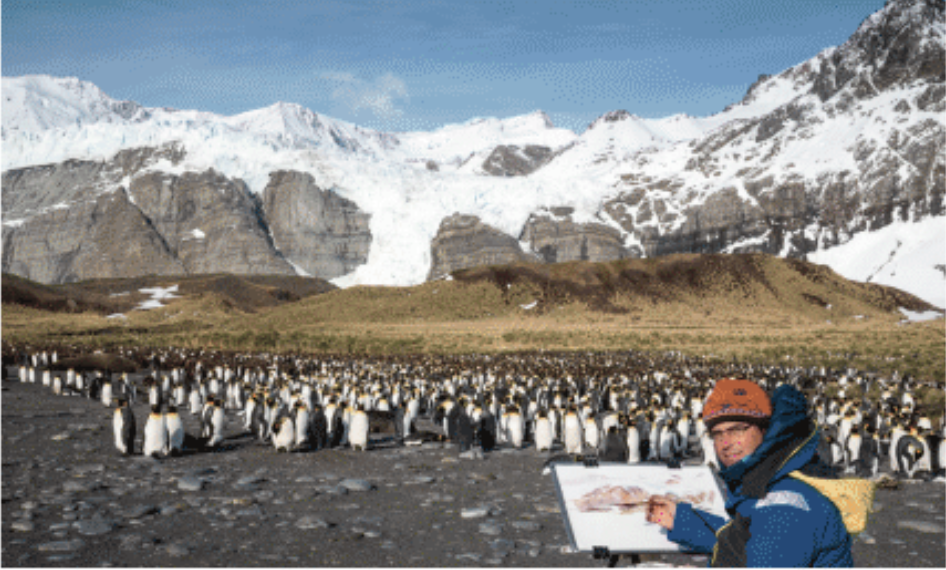
Once McEown has reached his destination, he creates at least two paintings at that location, one under morning light and the other during the afternoon. “The scenes change fast, so I have to quickly nail down the overall pattern of light and dark,” says the artist. “As I work quickly, I have to remain sensitive to the way the temperature and humidity are affecting the drying time of the watercolors. In dry climates, I add lots of extra water to the color mixtures and, if the atmosphere is damp, I reduce the amount of water and use something close to a dry brush technique. Another issue that can arise, especially in the polar regions that I often visit, is having watercolors freeze in subzero temperatures, so I sometimes travel with denatured alcohol, glycerin, or ox gall medium that can be mixed with the diluted paints to keep them from freezing. I should quickly point out that sometimes I want the paints to freeze and create random organic crystal patterns as the pigments freeze and thaw.”

The supplies McEown carries with him are also simple and efficient. In addition to the folder of papers and the plastic Holbein palette, the artist carries several brushes, including a No. 12 size Oriental brush, a 1-inch flat Kolinski sable brush, a 3-inch house painting brush, and a few calligraphy brushes. He also packs a paint scraper for pulling paint off a painting in places where he wants to add lines or textures, or scrape out light shapes from dark washes. The heaviest item in his backpack is always the container of water that is essential for dissolving the paints and adjusting the way the paint accepts and releases brush marks. If needed, the artist will also pack basic camping gear and food for extended trips on foot.
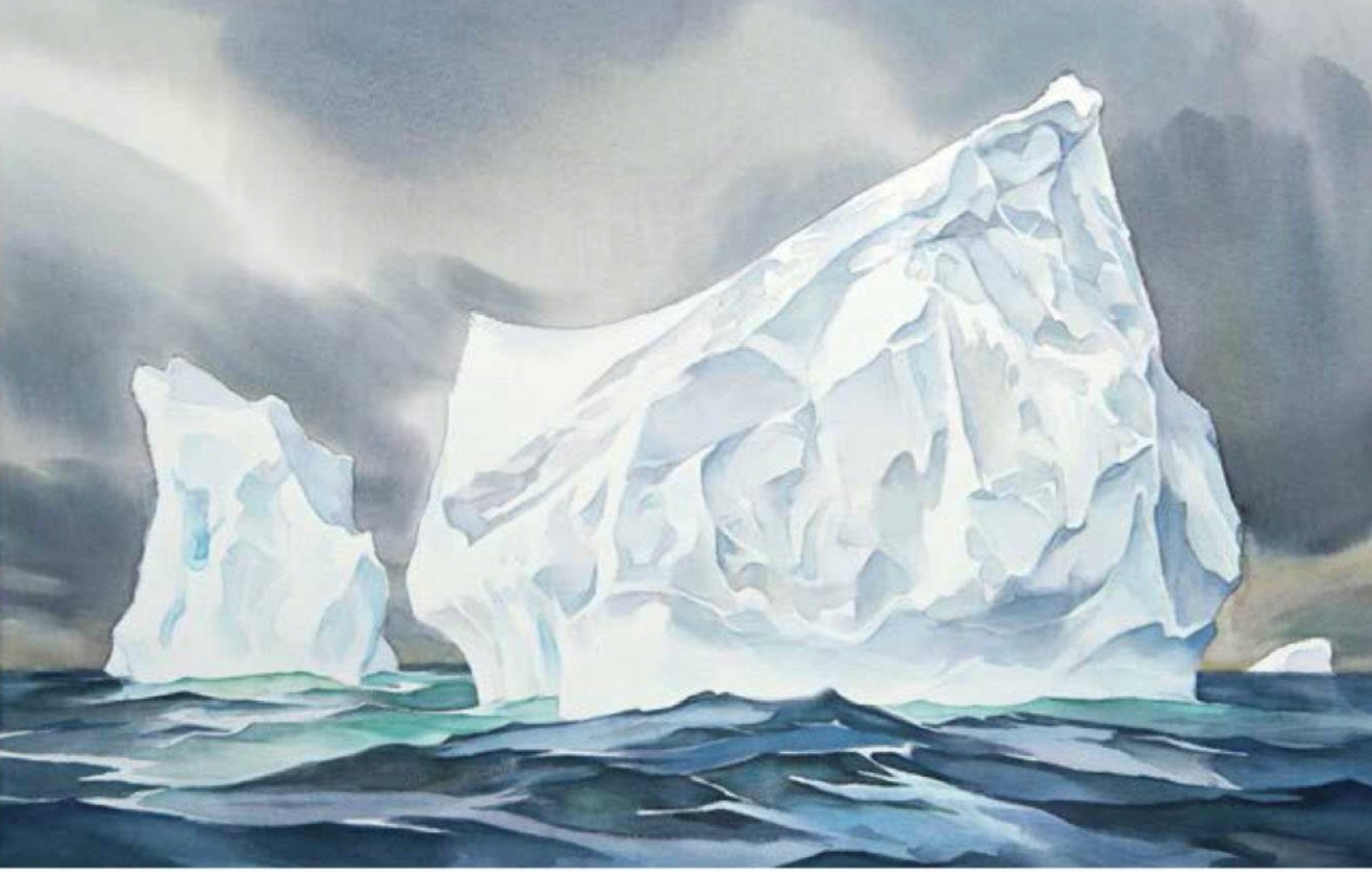
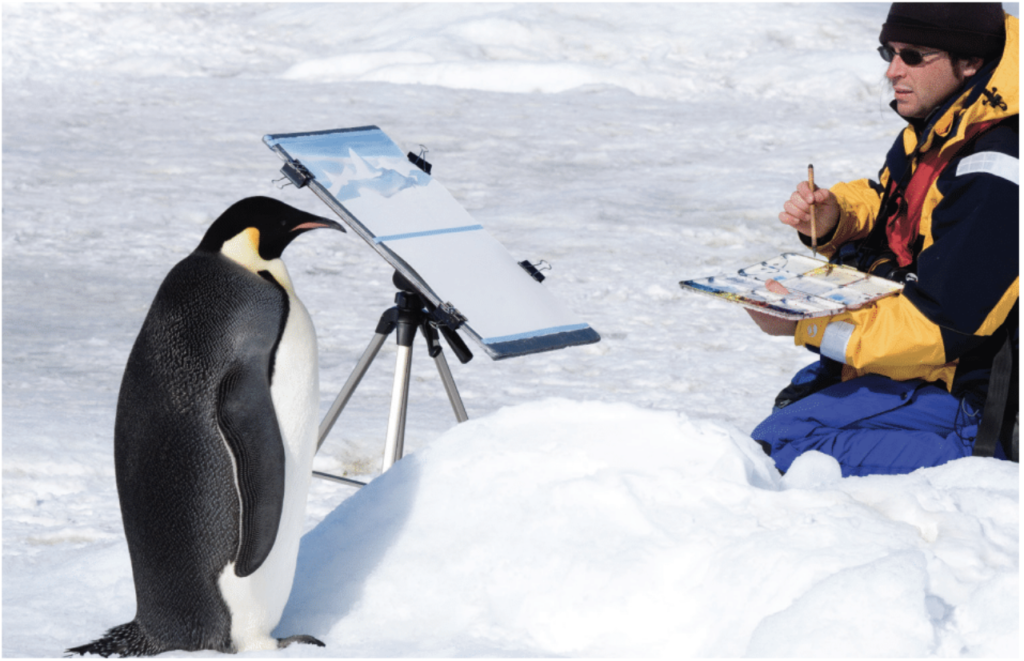 DAVID McEOWN graduated from the Ontario College of Art and Design (Canada) in 1992 after off – campus pursuing of independent studies at the Algoma School of Landscape Arts in the remote wilderness of Northern Ontario. He was awarded the Elizabeth Gre enshield Foundation Grant in 1994 and again in 1999, and he was elected a member of the Canadian Society of Painters in Watercolour, for which he served as a director from 2002 to 2007. His artwork has received national and international awards, in various juried shows, with his most prestigious award being the A.J. Casson Medal from the Canadian Society of Painters in Watercolour.
DAVID McEOWN graduated from the Ontario College of Art and Design (Canada) in 1992 after off – campus pursuing of independent studies at the Algoma School of Landscape Arts in the remote wilderness of Northern Ontario. He was awarded the Elizabeth Gre enshield Foundation Grant in 1994 and again in 1999, and he was elected a member of the Canadian Society of Painters in Watercolour, for which he served as a director from 2002 to 2007. His artwork has received national and international awards, in various juried shows, with his most prestigious award being the A.J. Casson Medal from the Canadian Society of Painters in Watercolour.

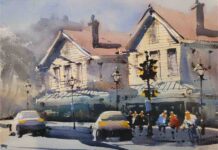
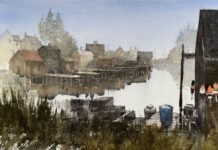





His paintings are phenomenal. You can feel the mood of the day.
Fascinating! Canadians ROCK! GREAT article, thank you
I have participated in a watercolour workshop with David McEwon and he really knows how to create the most luminous paintings. The places he travels to are absolutely inspiring and David has a wonderful way of telling a story about them with his paintings.